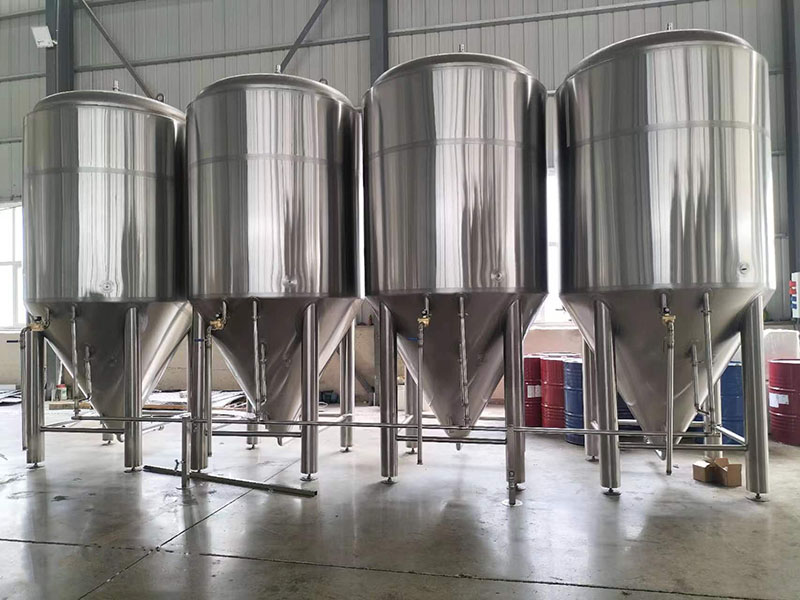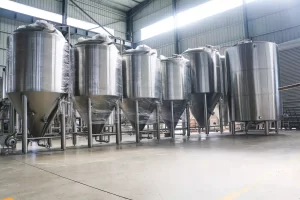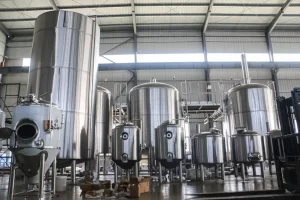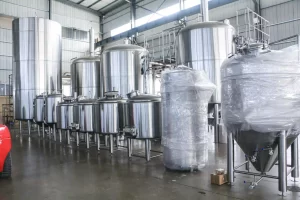Fermentation Control: Best Practices for Consistent Beer Quality

When it comes to brewing beer, achieving consistent quality is key to maintaining your brand’s reputation and customer loyalty. But, how do you ensure that every batch you produce meets the highest standards of taste and clarity? The answer lies in effective fermentation control—and the quality of your fermentation tank, brewery tank, and fermentation system plays a critical role in this process.
Inconsistent Fermentation Leads to Unpredictable Beer Quality
As a brewer, nothing is more frustrating than opening a new batch of beer only to find that the flavor, aroma, or clarity doesn’t meet expectations. The cause? Inconsistent fermentation. Fermentation is one of the most crucial stages of beer production, where yeast consumes sugars and produces alcohol, carbon dioxide, and various flavor compounds. Any disruption in this process can lead to off-flavors, undesirable aromas, and unstable carbonation levels.
Without proper fermentation control, external factors like temperature fluctuations, improper oxygen levels, or an inefficient fermentation system can negatively impact yeast performance and lead to variations between batches. This inconsistency can not only affect the taste but can also hurt your brewery’s bottom line by alienating customers.
Risks of Poor Fermentation Management
When fermentation is left unchecked, the results can be disastrous. Overly warm fermentation temperatures can lead to a higher rate of yeast activity, producing unwanted esters or fusel alcohols that impart harsh flavors. On the other hand, fermentation at too low a temperature can result in slow or incomplete fermentation, leaving residual sugars and leading to a sweeter-than-intended beer. Furthermore, oxygen exposure can lead to oxidation, producing stale or off-flavored beer.
These issues become even more pronounced in larger-scale brewing operations, where consistency between batches is a must for both craft and commercial brewers. Managing fermentation is a complex process—one that requires both the right equipment and precise monitoring to prevent these costly mistakes.
Best Practices for Fermentation Control
To ensure consistent beer quality, adopting the best practices for fermentation control is essential. Here’s how you can optimize your fermentation system for better results:
1. Invest in High-Quality Fermentation Tanks
Your fermentation tank is the heart of your brewing operation. It should be designed with advanced features to maintain optimal fermentation conditions, such as precise temperature control and air-tight seals. A high-quality brewery tank will also allow for better yeast management, ensuring that fermentation occurs as intended.
Consider tanks with built-in cooling jackets, which help regulate temperature and prevent yeast from becoming stressed. Stainless steel tanks are ideal for preventing contamination and oxidation, ensuring the beer remains clean and stable.
2. Implement Temperature Control Systems
Fermentation temperature is one of the most critical factors in brewing. Consistent, accurate temperature control is necessary to avoid off-flavors or stalled fermentations. Invest in a fermentation system with automated temperature control, such as glycol chillers, that can maintain a steady environment for your yeast. Many modern brewery tanks come equipped with built-in temperature sensors and digital controls for precise adjustments.
3. Oxygen Management
During fermentation, exposure to oxygen should be minimal to avoid oxidation. Invest in fermentation tanks with effective oxygen management systems, such as blow-off tubes or pressure relief valves. Keeping oxygen levels low will ensure that the yeast performs optimally and that your beer stays fresh and stable throughout the fermentation process.
4. Regular Monitoring and Quality Control
Implementing a consistent quality control routine is crucial. Regularly check the gravity, pH, and temperature throughout the fermentation process to detect any anomalies early on. By keeping track of these parameters, you can make adjustments before any issues compromise the batch. Using advanced sensors and data loggers in your fermentation system will allow you to monitor these variables in real time, making it easier to maintain consistent beer quality.
Conclusion
Fermentation control is the key to producing consistent beer quality, and the equipment you use—particularly your fermentation tank, brewery tank, and fermentation system—directly impacts the success of this process. By investing in quality tanks, implementing temperature and oxygen control systems, and performing regular monitoring, you can ensure that every batch of beer maintains the desired characteristics your customers expect.
For any brewery, whether large or small, mastering fermentation control isn’t just a best practice; it’s an essential component of long-term success in the highly competitive beer market. Make sure your fermentation system is up to the task—and watch your brewery’s reputation grow.
https://www.tcbrewbeer.com/en/10000l-brewery-tank/
https://www.tcbrewbeer.com/en/80bbl-fermentation-tank/
Related recommendations
Starting a Brewery Business Plan: Your Ultimate Guide to Crafting Success
177Starting a brewery business plan
View detailsHigh-Quality Brewery Equipment for Your Brewing Needs
148Looking for brewery equipment? We're a leading manufacturer. Offer quality gear for breweries, with good materials and prices. Get a free quote!
View detailsHow to Make a Microbrewery: A Step-by-Step Guide to Crafting Your Own Brew
149Discover how to make a microbrewery with tips on equipment, recipes, and marketing to start your craft beer business successfully.
View details
 Shandong Tonsenbrew Co., Ltd.
Shandong Tonsenbrew Co., Ltd.





HelloPlease log in